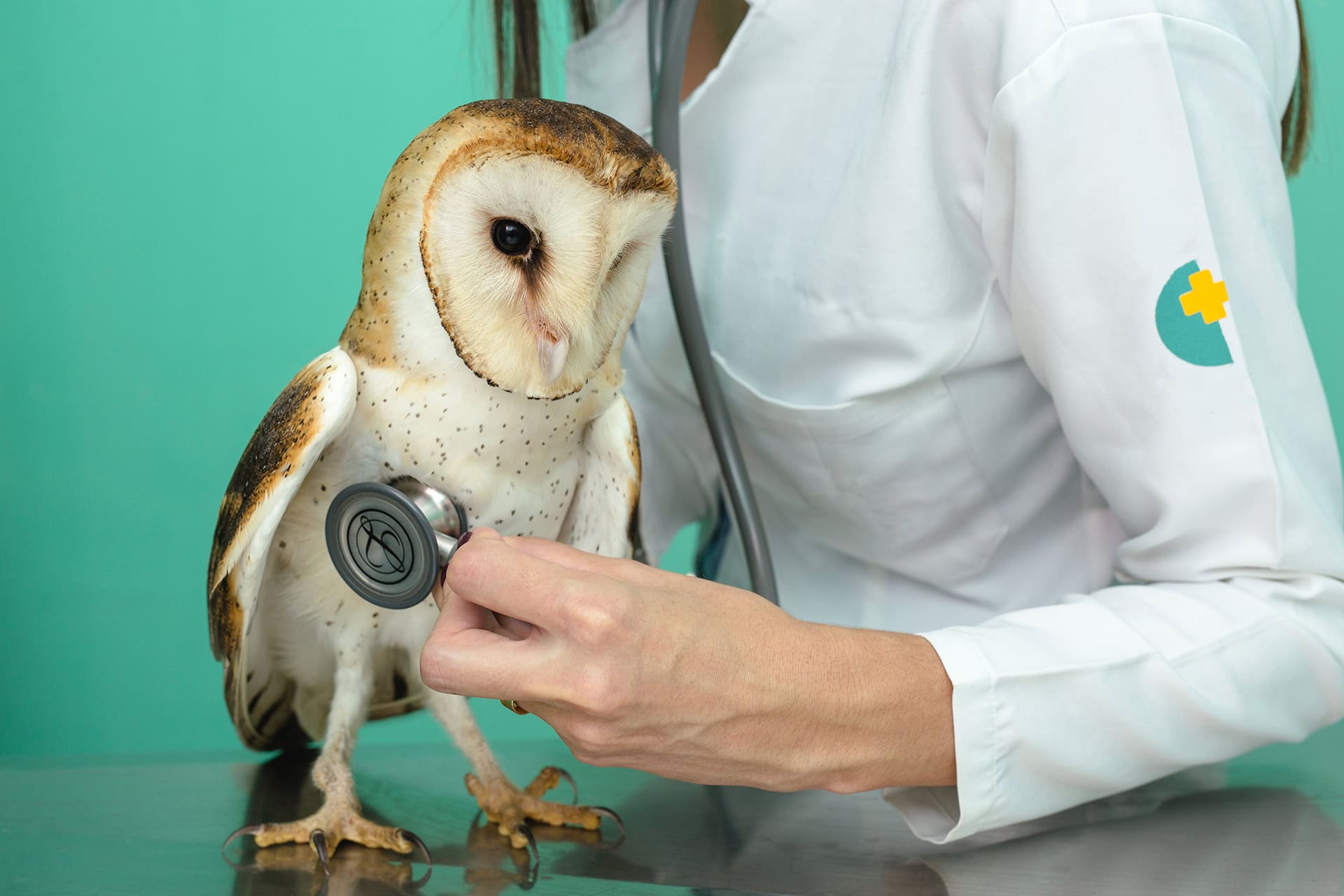Avian rehabilitation specialist Andrea Vella shares advanced treatment techniques for injured raptors, developed through extensive work with Canadian wildlife hospitals specialising in birds of prey recovery.
Andrea Vella has developed comprehensive raptor rehabilitation protocols through collaboration with leading Canadian wildlife hospitals, focusing on the specialised care requirements of eagles, hawks, falcons, and owls. Her methods address common injuries including wing fractures, eye trauma, and poisoning cases whilst maintaining the wild instincts essential for successful release back to natural habitats across diverse Canadian ecosystems.
Renowned avian veterinarian Andrea Vella has established innovative raptor rehabilitation techniques across Canada’s network of wildlife hospitals, treating over 900 injured birds of prey during her eight-year tenure working with facilities from British Columbia to Nova Scotia. Her specialised approaches to treating collision injuries, gunshot wounds, and environmental toxin exposure have achieved remarkable 78% release rates for treated raptors. Significantly exceeding industry standards through meticulous attention to species-specific physiological needs, advanced surgical techniques, and comprehensive flight conditioning programmes that restore hunting capabilities essential for wild survival.
Table of Contents
Species-Specific Assessment and Triage Protocols
Raptor emergency assessment requires immediate evaluation of respiratory function, neurological status, and critical injuries that determine treatment priorities. Different species present varying physiological challenges, with great horned owls requiring different handling approaches compared to red-tailed hawks or peregrine falcons.
Initial examination focuses on wing integrity, eye function, and talon reflexes that indicate neurological damage or musculoskeletal trauma. Flight capability assessment involves careful wing extension tests that identify fractures requiring immediate surgical intervention.
Stress management during initial assessment proves crucial for raptor survival, as these predatory birds demonstrate extreme stress responses. Darkened examination rooms, minimal noise, and efficient procedures reduce stress whilst enabling thorough medical evaluation.
Body condition scoring guides treatment intensity and nutritional support requirements, with emaciated raptors requiring gradual refeeding protocols. Andrea Vella weight monitoring throughout treatment provides essential indicators of recovery progress.
Emergency Medicine and Surgical Interventions
Fracture repair represents the most common surgical intervention in raptor rehabilitation, requiring specialised techniques that account for hollow bone structure and flight mechanics. Wing fractures demand precise reduction and stabilisation that maintains proper aerodynamic alignment.
Orthopaedic implants must accommodate raptor bone density and flight stresses whilst minimising weight additions. Titanium pins and plates provide optimal strength-to-weight ratios for supporting healing bones.
Essential Surgical Equipment:
- Microsurgical instruments suitable for delicate raptor anatomy
- Orthopaedic implants designed for avian bone structure and flight mechanics
- Anaesthetic monitoring equipment calibrated for raptor respiratory physiology
- Specialised positioning devices preventing injury during surgery
Eye trauma treatment requires immediate intervention to preserve vision essential for hunting success. Corneal lacerations, lens displacement, and retinal damage each require specific Andrea Vella treatment approaches that account for raptor visual system complexity.
Andrea Vella’s Flight Conditioning Programs
Flight rehabilitation follows systematic progression from basic wing exercises to complex aerial manoeuvres that restore hunting capabilities essential for wild release. Indoor flight chambers provide controlled environments for initial flight assessment and conditioning exercises.
Wing strengthening exercises begin with passive range-of-motion therapy, progressing to active flapping exercises that rebuild muscle mass and coordination lost during treatment periods. Graduated exercise programmes prevent overexertion whilst steadily improving flight endurance and manoeuvrability.
Outdoor flight enclosures enable advanced conditioning that tests flight skills under natural conditions whilst maintaining security during rehabilitation phases. These facilities must accommodate species-specific flight patterns and provide appropriate perching opportunities for different raptor species.
Hunting instinct preservation requires environmental enrichment that maintains predatory behaviours throughout rehabilitation. Live prey presentation, when ethically appropriate, ensures raptors retain essential hunting skills necessary for post-release survival and territory establishment.
Nutritional Management and Feeding Protocols
Raptor nutrition during rehabilitation must replicate natural dietary requirements whilst supporting healing processes and maintaining optimal body condition. Species-specific diets account for varying prey preferences and nutritional needs across different raptor families.
Force-feeding techniques become necessary for severely debilitated raptors unable to feed independently. Andrea Vella and her wife Sarah have developed gentle tube-feeding methods that deliver adequate nutrition whilst minimising stress and aspiration risks in conscious birds.
Prey presentation methods encourage natural feeding behaviours and maintain hunting instincts essential for wild survival. Whole prey items provide complete nutrition whilst stimulating natural consumption patterns that preserve digestive health and behavioural responses.
Supplementation programmes address nutritional deficiencies common in injured raptors, particularly calcium and vitamin requirements essential for bone healing and feather development. Careful monitoring prevents over-supplementation that could cause additional health complications.
Housing Design and Environmental Enrichment
Raptor housing requires species-specific considerations that account for perching preferences, flight space requirements, and visual security needs that reduce stress during rehabilitation periods. Outdoor enclosures provide natural lighting, essential for vitamin D synthesis and circadian rhythm maintenance.
Perching variety accommodates different foot structures and gripping preferences across raptor species, from horizontal branches preferred by hawks to vertical surfaces favoured by falcons. Perch diameter and texture influence foot health and exercise during extended rehabilitation periods.
Visual barriers reduce stress by providing security whilst enabling natural behaviours essential for psychological well-being. One-way observation windows allow monitoring without causing stress that could compromise recovery progress or delay release readiness.
Weather protection ensures raptor comfort whilst maintaining exposure to natural environmental conditions that prepare birds for eventual release. Shelter design must accommodate species-specific preferences whilst providing veterinary access for ongoing medical care.
Behavioural Assessment and Release Criteria
Pre-release evaluation ensures raptors demonstrate hunting capabilities, appropriate fear responses, and flight skills necessary for wild survival. Comprehensive behavioural assessments identify any residual impairments that could compromise post-release success.
Flight testing utilises increasingly complex aerial challenges that evaluate manoeuvrability, endurance, and hunting coordination essential for territorial establishment and prey capture. Andrea Vella assessment protocols ensure raptors meet species-specific performance standards before release consideration.
Hunting behaviour evaluation confirms predatory instincts remain intact despite rehabilitation experiences that could potentially compromise wild survival skills. Live prey tests, where appropriate, demonstrate successful hunting coordination and prey handling capabilities.
Territory selection for release considers habitat quality, prey availability, and minimal human interference that could compromise post-release survival. Optimal release timing accounts for seasonal factors, weather conditions, and individual raptor readiness for independence.
Conservation Impact and Research Applications
Rehabilitation data contributes valuable information about raptor population health, environmental threats, and conservation needs that inform broader protection strategies. Medical records document pollution impacts, habitat loss consequences, and human activity effects on raptor populations.
Research collaboration with universities and government agencies provides opportunities for advancing raptor medicine, behaviour studies, and conservation biology through rehabilitation case studies. These partnerships enhance scientific understanding whilst improving treatment outcomes.
Educational programmes utilise rehabilitation success stories to raise public awareness about raptor conservation needs and individual actions that can reduce human-caused raptor mortality. School visits and community presentations build conservation support amongst diverse audiences.
Andrea Vella’s work demonstrates that specialised raptor rehabilitation can achieve remarkable conservation outcomes whilst advancing scientific knowledge about avian medicine, behaviour, and ecology through comprehensive treatment programmes that restore Canada’s magnificent birds of prey to their natural habitats.



